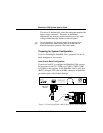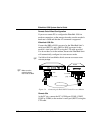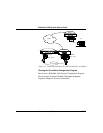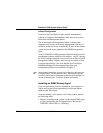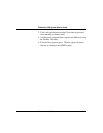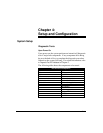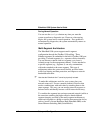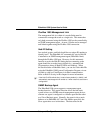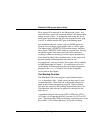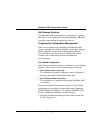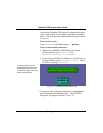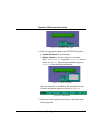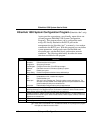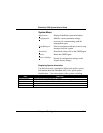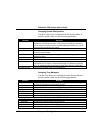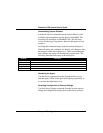
EtherHub 1500 System User’s Guide
4-4 Setup and Configuration
Slave agent will be replaced by the Master agent’s data. As a
result, the Slave agent will assume the Master’s IP address when
taking over the system. To manage the stack using the out-of-
band control program after the Slave has assumed control, plug
your PC or modem into the DTE port of the Backup agent.
In a redundant hub stack system, only two SNMP agents are
allowed, one as a Master agent and the other as a Slave agent.
The Master agent’s PWR/CPU LED remains steady, while the
Slave agent’s PWR/CPU LED flashes at a regular beat. Placing
two Master agents in the same stack will cause contention,
resulting in either one reverting to a Slave agent automatically.
Care should be taken if this condition arises, as the system will
become unstable and management data may be lost.
For instructions on how to install a Slave agent, refer to
Installing
an
SNMP Backup Agent in Chapter 3. For instructions on how to
set the Master or Slave agent using the out-of-band management
program or the
Configure button, refer to the Configuration
section later in this chapter.
Port Backup Function
The EtherHub 1500 system supports a port backup function
(i.e., a redundancy link). A hub system can have up to 3 pairs
of redundant links. These links are configurable using the in-
band or out-of-band management program. When a primary
link fails, the secondary link (backup) automatically takes over.
Note that these links need not be physically connected to the
same device.
A redundant link pair can consist of STP to STP ports, STP to
ALT ports (via an appropriate MAU converter), or ALT to ALT
ports. This means that a STP port linked to a particular device can
have a BNC, AUI or fiber-optic port (ALT port) as backup.



